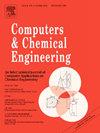Noninvasive inline imaging and computer vision-based quality variable estimation for continuous slug-flow crystallizers
IF 3.9
2区 工程技术
Q2 COMPUTER SCIENCE, INTERDISCIPLINARY APPLICATIONS
引用次数: 0
Abstract
This study presents a transformative approach for the real-time monitoring of continuous slug-flow crystallizers in the pharmaceutical and fine chemical industries, marking a shift from traditional batch processing to continuous manufacturing. By leveraging advanced computer vision techniques within inline imaging systems, including single, binocular, and trinocular stereo visions, we offer a novel solution for the multispatial monitoring and analysis of the crystallization process. This methodology facilitates the automatic detection of solution slugs and bulk crystal regions, enabling the estimation of dynamic bulk crystal density, slug volumes, and porosity in real time. The deployment of ResNet18 and Mask R-CNN models underpins the method's efficacy, demonstrating remarkable performance metrics: ResNet18 ensures precise image detection, while Mask R-CNN achieves an average precision (AP) of 96.4%, with 100% at both AP50 and AP75 thresholds for bulk crystals and solution slugs’ segmentation. These results validate the models’ accuracy and reliability in estimating quality variables essential for continuous slug flow crystallization. This advancement not only addresses the limitations of existing monitoring methods but also signifies a leap forward in applying computer vision for process monitoring, offering significant implications for enhancing decision-making, optimization, and control in continuous manufacturing operations.
连续段塞流结晶器的无创在线成像和基于计算机视觉的质量变量估计
本研究提出了一种变革性的方法,用于制药和精细化工行业的连续段塞流结晶器的实时监控,标志着从传统的批量加工向连续制造的转变。通过利用内联成像系统中的先进计算机视觉技术,包括单、双目和三眼立体视觉,我们为结晶过程的多空间监测和分析提供了一种新颖的解决方案。该方法有助于自动检测溶液段塞和块状晶体区域,从而实时估计动态块状晶体密度、段塞体积和孔隙度。ResNet18和Mask R-CNN模型的部署巩固了该方法的有效性,展示了显著的性能指标:ResNet18确保了精确的图像检测,而Mask R-CNN实现了96.4%的平均精度(AP),在块状晶体和溶液slugs分割的AP50和AP75阈值下均为100%。这些结果验证了模型在估计连续段塞流结晶所必需的质量变量方面的准确性和可靠性。这一进步不仅解决了现有监测方法的局限性,而且标志着将计算机视觉应用于过程监测的飞跃,为增强连续制造操作中的决策,优化和控制提供了重要意义。
本文章由计算机程序翻译,如有差异,请以英文原文为准。
求助全文
约1分钟内获得全文
求助全文
来源期刊

Computers & Chemical Engineering
工程技术-工程:化工
CiteScore
8.70
自引率
14.00%
发文量
374
审稿时长
70 days
期刊介绍:
Computers & Chemical Engineering is primarily a journal of record for new developments in the application of computing and systems technology to chemical engineering problems.
 求助内容:
求助内容: 应助结果提醒方式:
应助结果提醒方式:


